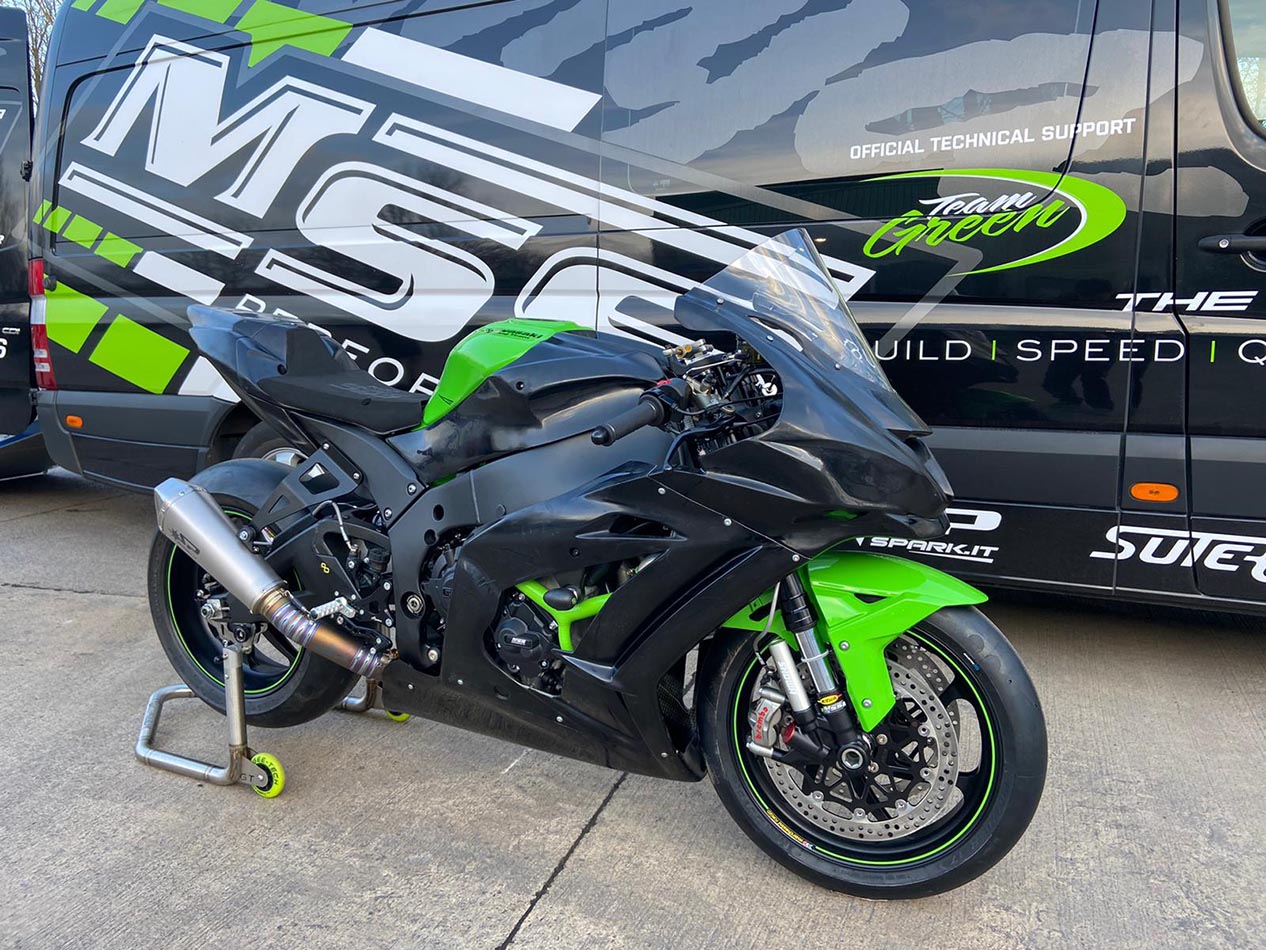For three quarters of the year, we watch racers and their teams squeeze every bit of performance out of their bikes to gain a tenth of a second here and a hundredth there, in order to achieve the best possible lap time.
So, what makes a racing motorcycle different to the bike you can ride out of your local showroom? To find out, we spoke to experienced motorcycle racing mechanic Tom Brown from Colchester-based Kawasaki tuning specialists MSS Performance, about the process of turning a standard road bike into a superstock race bike, and the modifications required.
Unlike superbikes, which are based on the same machines, but which can have a plethora of engine and chassis tuning parts, superstock machines are much closer to the litre sports bikes that sit in dealership showrooms. Here’s a breakdown of the main changes involved when building one.
Step 1: Standard bike strip down
All motorcycles are manufactured to road legal requirements and include parts which aren’t needed in racing, such as mirrors, lights, heavy exhaust systems and so on. These all add weight, which is your enemy when racing.
Modern sports bikes also come with electronic rider aids which are focused on road safety rather than racing in mind, such as the Anti-Lock Braking System (ABS). The ABS system is also removed when stripping the bike down, as well as the standard chain and sprockets, air filter, and the anti-freeze, which in not allowed in racing as it can contaminate the circuit in the event of a crash.
Once all the unnecessary road going elements of the motorcycle have been removed, the race bike can start taking shape.
Step 2: Engine adjustments
This is where the conversion from road bike to race bike starts. As most modern-day sports bikes pump out 200bhp+ as standard, little adjustments need to be made to a superstock bike’s engine in terms of performance. Also, the category’s regulations forbid too much fettling in order to keep costs down and keep the series competitive.
But one of the most important things that can be done to release the full potential of the engine is to “flash” the bike’s on board brain – the Electronic Control Unit (ECU). This is done because standard road bikes are bound by Euro 5 restrictions which hinders true performance. By using intelligent software, it’s possible to edit the throttle mapping, fuel mapping, ignition mapping and more to increase performance.
Flashing the ECU is allowed in most club racing championships, but in the National Superstock 1000 championship, which is a support class to the British Superbike Championship, teams run a race kit ECU if the bike’s manufacturer produces one. This type of ECU allows a whole host of changes, including the basic fuel and ignition tables, as well as the more technical traction control and anti-wheelie settings.
Step 3: Exhaust change
Standard exhaust systems on road-going motorcycles are heavy, mainly because they house a catalytic converter and come complete with a large silencer which makes exhaust tone quieter and the gasses from the engine more environmentally friendly.
Again, this isn’t something that’s required in racing, so the entire exhaust system can be replaced with a lighter, and more free-flowing system which allows gasses to escape faster from the engine. This in turn enables more air and fuel to get into the cylinder during the intake stroke, which equals more power.
However, the weight loss and power gains come at a significant cost to race teams, as a full titanium race exhaust can cost anything up to £2,500.
Step 4: Suspension and brakes
The suspension and brakes on today’s standard sports bikes are excellent, and more than suitable for most track day riders. But standard suspension is mainly designed to be usable across a wide range of rider weights and on various road surfaces. Every customer is different, so it needs to work equally well whether the rider weighs 120kg as it does for someone who weighs 60kg.
Both suspension and brakes are arguably the most important parts of a racing motorcycle. If they’re setup correctly for the rider it can mean taking seconds off per lap, which is an eternity in racing terms. Suspension upgrades include an adjustable aftermarket rear shock absorber and a front fork cartridge kit which are set up specifically to the racer’s specifications. And to help stop the bike, brake lines, pads and disks are upgraded too.
During a race weekend, these components are subject to huge forces at almost every turn, so specialist parts are able to cope with the pressures of constant hard braking and acceleration better than the road-going counterparts, while maintaining excellent handling capabilities.
Step 5: Rider adjustments and finishing touches
The final stages of the race bike build is to modify the foot pegs, handlebars and height levels to suit the rider’s size and style of riding. Once this is sorted, lightweight race fairings are added with the team’s custom paint scheme, along with some race spec tyres, and it’s ready to race.
Along with increasing performance, the majority of changes made during the transformation from a road bike to a race bike is to make the machine more adjustable. Each circuit has different characteristics and requires a slightly different setup – from a flat, featureless circuit like Snetterton to the undulations of Oulton Park – the settings need to change. Then throw in the unpredictability of the weather, things need to be adjusted even further.
So, how much does it cost?
To turn a standard road-going sports bike into a Superstock spec race bike, it can be an additional £8,000 to £10,000 of upgrades on top of the cost of the bike, although this is dependent on the rider’s or team’s budget and the top teams in the national championships will spend much more than this.



